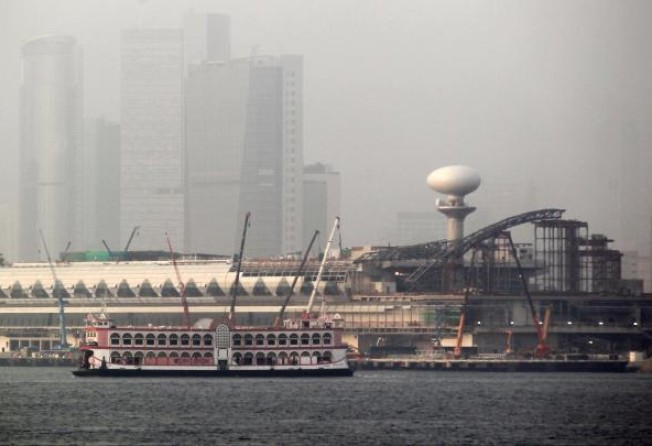Hold government to its green pledge for Kai Tak cruise terminal
Edwin Lau says with just months to go before the Kai Tak cruise terminal opens, the government must honour its pledge to reduce ship emissions

Very few people realise that the new Kai Tak cruise terminal will have a big impact on the air quality of the neighbouring districts. When the government of the day first sought legislators' approval for funding to build a cruise terminal at the old airport site, it said it would make Kai Tak a "smokeless" hub by promoting electric-powered transport within the site. How well can it keep its promise?
Cruise liners emit air pollutants such as sulphur dioxide as they burn bunker fuel, which has high sulphur content. It is worrying to learn from the chief executive's policy address that marine vessels were the largest source of sulphur dioxide, nitrogen oxides and particulates in Hong Kong last year.
Leung Chun-ying told lawmakers that the government would seek Legislative Council approval for funding to install onshore power supply facilities at Kai Tak, to allow ships to switch to electrical power while at berth. But this assurance has come too late, as the terminal will be operational in a few months.
The Civil Engineering and Development Department, which is overseeing the project, is duty-bound to ensure minimal environmental damage right from the start, at the project's planning stage. In fact, a mitigation measure it proposed in the project's environmental impact assessment report was to provide an onshore power supply at the terminal. The department also claimed that vessel emissions would gradually lessen because the sulphur content in the fuel would be more strictly controlled.
We know now that the department made such claims in 2009 without any government commitment then to mandate fuel standards for vessels or seek funds to build an onshore power supply system. The environmental impact report was approved with an overall budget that did not include funds for onshore power supply facilities.
Only now is the government belatedly seeking funding for such an important feature of Hong Kong's "green cruise terminal".
Leung also said the government is considering legislation requiring a fuel switch at berth. But even with such legislation, if ships were not required to switch to low-sulphur fuel when entering Hong Kong waters, their harmful pollution would still affect us.
It would take a few years for the government to mandate fuel standards for vessels as well as install the onshore power system; in the meantime, it should propose stronger measures and incentives to get the trade to agree to a fuel switch before the first cruise liners come calling in June.
It could consider a port facilities charge to encourage fuel switching. The Tourism Commission could do its part by only inviting liner operators who have agreed to a fuel switch to use the new terminal, and denying entry to those that will not.
Turning the Kai Tak cruise terminal into Asia's green port should only be the start; similar environmentally friendly measures should also be implemented at the Kwai Tsing container terminal and Ocean Terminal.
The environmental impact assessment system should be further improved. The government has pledged to make Kai Tak a "smokeless" hub. The public expects Leung to deliver.
Edwin Lau Che-feng is director of general affairs at Friends of the Earth (HK). www.foe.org.hk